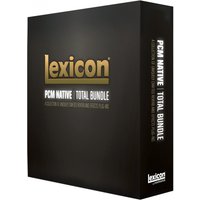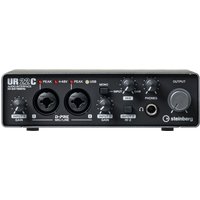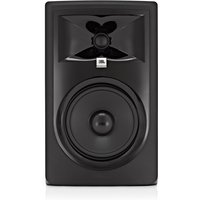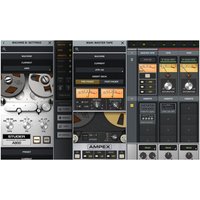The Lexicon PCM Total Bundle is a plug-in collection which contains the PCM Native Reverb and PCM Native Effects bundles. Combining the critically acclaimed Native Reverb Bundle and Native Effects Bundle you get a complete package of 14 extraordinary Lexicon reverb and effects plug-ins. These meticulously crafted tools provide unparalleled versatility and sonic excellence to elevate your mixes to new heights. The PCM Native Effects Bundle features Pitch Shift MultiVoice Pitch Chorus Resonant Chords Random Delay Dual Delay and Stringbox. All these effect plug-ins offer the highest level of sophistication providing an unparalleled experience in terms of sonic quality and function. Whether you require flexibility inspiration or professional-grade equipment for your audio application the PCM Native Effect Bundle is the ultimate plug-in package that will make sound effects design come to life. This Native Bundle boasts seven sophisticated reverbs and hundreds of finely-crafted studio presets including the vintage plate plate hall room random hall concert hall and chamber. It has been specifically designed to provide the highest level of sonic quality and functionality across all audio applications making it the ideal tool for mixing post-production and sound design. With its complete collection of the finest reverb plug-ins the PCM Native Reverb Plug-In Bundle will undoubtedly take your audio production to the next level. Please Note: This product comes in the form of a digital download code that will be sent to your email for activation.
Lexicon PCM Native Effects Plugin Bundle Pitch Shift The Pitch Shift algorithm allows you to adjust the pitch using one of two types: Musical or Percent mode. In Musical mode you can adjust the pitch in semitones (-12 to 12) and/or cents (-50 to 50). In Percent mode you can adjust the pitch between -60% and 60%. The algorithm also provides control over crossfade low shift cutoff frequency smart shift and correlation. With Pitch Shift musicians can experiment with creating unique sounds that add character to their music such as making a guitar solo stand out or transforming a vocal into a haunting or hilarious effect. Sound engineers can also use Pitch Shift to correct pitch issues in post-production for films and videos. MultiVoice Pitch With MultiVoice Pitch each voice has an independent control pitch shifter which can be adjusted in semitones (-12 to 12) and/or cents (-50 to 50). The algorithm also provides feedback control capabilities which are used for creating arpeggios. To further enhance the sound MultiVoice Pitch includes six total delay voices (three delay voices per input channel) each with independently adjustable delay time of up to 4.75 seconds. Additionally each voice has independent output and feedback control. The output and feedback paths for each delay voice include an independently selectable filter adjustable filter frequency filter bandwidth filter shelf polarity level and pan control. This algorithm offers complete control over the sound allowing sound designers and music producers to experiment with various effects and create unique soundscapes. MultiVoice Pitch can add depth and dimension to vocals instruments and other sounds giving your tracks a professional and polished sound. Chorus The Chorus (Flange) algorithm is a versatile tool that sound designers and music producers use to create a range of effects on different instruments. It is commonly used to thicken a track add shimmering effects or create a sweeping sound similar to that of a phaser effect. While this algorithm is similar to other delay algorithms in the PCM Effects Bundle the difference lies in its modulation aspect. The LFO modulators are available as in the Random Delay algorithm but the voices move differently in the Chorus (Flange) algorithm. The voices move gradually creating noticeable pitch effects that enhance the overall sound. In chorus mode the voices move independently resulting in a thickening effect without significant filtering. In flange mode voices are typically paired at close intervals creating comb-filtering due to cancellation. The feedback paths are often fed back nearly to the point of instability resulting in unique and interesting effects. The Chorus (Flange) algorithm has eight total delay voices (four delay voices per input channel) with each voice having an independently adjustable delay time of up to 9.5 seconds (plus an additional 1 second of “Wander” delay). The algorithm also includes selectable LFO and independent output and feedback control. Each of the delay voices output and feedback paths includes an independently selectable filter with adjustable filter frequency filter bandwidth filter shelf polarity level and pan control. Resonant Chords This algorithm enables you to tune multiple delay voices to resonate on specific notes producing glistening chords strange ringing delays or even bizarre room sounds. When using the Resonant Chord algorithm impulsive energy is utilized at the inputs to excite six resonant voices or notes. While these voices can resonate with any input the most effective excitation typically includes all frequencies like percussion. The algorithm can also create a tonal ambience where certain notes rise ethereally from the background when used with various instruments. The Resonant Chords algorithm has eight total delay voices (four delay voices per input channel). Each voice has independently adjustable delay time of up to 9.5 seconds resonance frequency resonance amount resonance filter resonance detune and independent output and feedback control. Additionally each of the delay voices output and feedback paths includes an independently selectable filter adjustable filter frequency filter bandwidth filter shelf polarity level and pan control. With its array of features the Resonant Chords algorithm offers complete control over the sound allowing sound designers and music producers to create captivating and unique soundscapes. Whether youre looking to add glistening chords to your music or create bizarre and otherworldly effects the Resonant Chords algorithm can help you achieve the desired effects. Random Delay Multitap Tape Loops benefit from the Random Delay algorithm by utilizing feedback to circulate delays effectively. By incorporating highpass and lowpass filters users can replicate the bandpass effects found in multi-generational tape loops minus the hiss. Additionally feedback diffusion helps mimic azimuth misalignment a distinct characteristic of this sound. When it comes to Early Reflection Modeling the Random Delays algorithm can be employed to position early reflections within stereo or surround fields providing an alternative approach to Lexicon® Ambience algorithms. Modulated Delays are another area where the Random Delay algorithm shines. Users can adjust delay times based on signal level LFO or random values. Building upon the Dual Delay algorithm Random Delays offer enhanced LFO control and an extra delay parameter called “Wander.” The Wander parameter contributes up to one second of supplementary delay time per voice with voices assignable to either randomize or remain consistent. Boasting four total delay voices (two per input channel) the Random Delay algorithm allows for independent adjustment of delay time up to 9.5 seconds (plus an extra second of “Wander” delay) selectable LFO and separate output and feedback control. Furthermore each delay voices output and feedback paths feature independently selectable filters adjustable filter frequency filter bandwidth filter shelf polarity level and pan control. Dual Delay For stunning delay effects like Slap Back Echo Tape Echo and Double Tracking the Dual Delay algorithm is an excellent choice. While similar to the Chorus (Flange) algorithm it features fewer delay voices and lacks LFO control. The algorithm offers four total delay voices with two voices per input channel. Each voice comes equipped with independently adjustable delay times up to 9.5 seconds and separate output and feedback controls. Additionally each delay voices output and feedback paths include an independently selectable filter adjustable filter frequency filter bandwidth filter shelf polarity level and pan control. Stringbox Imagine the ghostly harmonies created by a pianos strings vibrating through sympathetic resonance – thats the essence of the Stringbox algorithm. This unique resonator responds to sound energy at the frequency of a string or its multiples resulting in a captivating sonic experience. With 88 courses of virtual strings each consisting of three strings the Stringbox algorithm allows for various tuning and detuning options. Users can also easily adjust the characteristics of the strings and the materials theyre made from providing endless possibilities for crafting mesmerizing sounds. Lexicon PCM Native Reverb Plug-in Bundle Chamber Within the echo chamber a carefully arranged setup featured microphones and speakers. The input signal would be sent to the speakers creating an enchanting reverb that was captured by the microphones. Even today numerous exceptional echo chambers can be found in operation around the world preserving the rich heritage of this iconic reverberation technique. The chamber algorithm embodies distinct characteristics including rapid high density and an emphasis on avoiding noticeable wall slaps. This intricate miniature-space effect can resemble an echo chamber at lower settings while at higher settings it simulates the ambience of a small performance space with a quicker buildup of reflection density compared to a traditional hall. Hall Highly acclaimed by live sound and recording engineers for their exceptional ability to recreate the captivating musical ambience of expansive and panoramic spaces Lexicon Hall stands out from the crowd of hall reverbs. Whether its classical ensembles or diverse genres it has proven indispensable. The hall serves as the primary venue for classical ensembles offering generous dimensions with wall-to-wall distances spanning several tens of meters. Smaller halls cater to more intimate ensembles. The hallmark of a Lexicons Hall sound is characterized by a remarkably low initial reflection density with minimal reflection energy before 60-100 milliseconds. The gradual density buildup is attributed to the greater distances between reflecting surfaces. The reverberation time is slightly longer while lower frequencies tend to resonate more than higher frequencies. The new hall algorithm akin to Random Hall and Concert Hall embodies these fundamental characteristics while offering a smoother and more even decay. Its initial density is even lower than that of Random Hall making it an excellent choice for achieving unobtrusive reverberation when needed. Random Hall Known for its exceptional ability to faithfully recreate the captivating musical ambience of expansive and panoramic spaces Random Hall can transport listeners into wide immersive sonic environments. Random Hall closely related to Hall offers a gradual density buildup and is particularly suited for complex sounds like orchestral music. It incorporates controlled random variations in its reverberators over time skillfully avoiding any undesirable tinny grainy or metallic colourations. The noticeable modulation it imparts is often sought after and celebrated. Random Hall stands as one of the timeless classic Lexicon sounds. Customize the early reflections in Random Hall adjusting their amplitude and delay to shape your desired reflection patterns. The “Delay Master” control allows you to expand or contract the pattern in time while the “Early Level” control sets the overall level of the reflections. Achieving optimal reflection patterns may require some expertise but the results are well worth the effort. While a hall primarily serves as a venue for classical ensembles its versatility extends to all genres of music. These comparatively large spaces feature wall-to-wall distances spanning several tens of meters. Smaller halls cater to more intimate ensembles. The characteristic sound of a hall is defined by its remarkably low initial reflection density with minimal reflection energy before 60-100 milliseconds. The gradual density buildup attributed to the larger distances between reflecting surfaces contributes to a longer reverberation time. Notably lower frequencies tend to resonate for a longer duration than higher frequencies adding a touch of delightful irregularity to the decay. Plate Plate reverbs excel in enhancing percussion sounds thanks to their ability to become an integral part of the music. They add a touch of mellowness and thickness to the initial sound itself creating a rich and immersive sonic experience. The iconic plate sound is often associated with the very essence of reverb and finds wide application across various genres of popular music. Vintage Plate The Vintage Plate plug-in faithfully emulates the distinct characteristics of plate reverberators. It showcases high initial diffusion and a vibrant coloured sound making it an excellent choice for enhancing percussion elements. Specifically designed to be an integral part of the music Vintage Plate adds a touch of mellowness and thickness to the initial sound elevating the overall sonic experience. The Vintage Plate algorithm combines the new equalization enhancements inspired by the PCM96 plate while also capturing the unique characteristics of older plate implementations. It boasts its own distinct “voice” with varying input diffusion delivering a nuanced sonic response. Additionally the algorithm features an extra pair of echo voices further expanding its sonic capabilities. Concert Hall Renowned Lexicon® Hall Concert Hall and Random Hall reverb algorithms are consistently favoured by live sound and recording engineers due to their unparalleled capacity to replicate the captivating ambience of vast spacious and panoramic environments. This reverb represents an enhanced version of one of Lexicons earliest algorithms that played a crucial role in shaping the mixes of the late seventies and eighties. This less-dense reverb adds richness to a mix without overshadowing the dry source material featuring prominent modulation that creates striking pitch effects at higher settings. The reverb tail possesses its unique charm making it suitable for pop music but less ideal for jazz or classical applications. Halls serve as primary venues for classical ensembles but they have also proven valuable for various music genres. Halls are typically expansive with wall-to-wall distances spanning several tens of meters. Smaller halls cater to more intimate ensembles. The distinct sound of a hall exhibits very low initial reflection density with minimal reflection energy before 60-100 milliseconds. Density buildup occurs gradually due to the increased distances between reflective surfaces. Additionally reverberation time is somewhat extended and lower frequencies tend to reverberate longer than higher ones in most halls. Room The Room algorithm first introduced in the PCM96 stands as one of the most versatile algorithms ever developed by Lexicon®. It enables users to effortlessly select scale and equalize reflection patterns while processing audio and even allows for instant room size modification or reversal. This algorithm shares similarities with other Lexicon® reverbs in its ability to create the illusion of space but it also possesses distinct features. Reviews “The clever programming which gave these algorithms their edge still sound as good today as they did when they changed the sound of music all those years ago.” – Production Expert “Whether youre working on film folk music orchestra or pop this is the perfect plug‑in bundle” – Sound on Sound “Amazing Sound. Easy to Use. Loads of expertly crafted presets. Lexicon has given us a classy software reverb that sounds just as good as its fabled hardware. 4.5/5” – Music Radar “This is the reverb bundle to beat.” – EMusician “The bottom line here is that the PCM Native Reverb Plug-in Bundle looks and sounds like a PCM96 and worked instantly and flawlessly in my DAW…This may be the first time a high-end manufacturer has created a fully functional emulation of a top-selling hardware unit with no limitations.” – Audio Technology FeaturesComes loaded with both the award-winning PCM Native Reverb Bundle and the PCM Native Effects Bundle Each bundle contains seven unique plug-ins for a total of 14 stunning plug-ins for your DAW Seven legendary Lexicon Reverbs including Vintage Plate Plate Hall Room Random Hall Concert Hall Chamber Includes seven unique Lexicon plug-ins including Pitch Shift Multi-voice Pitch Chorus Resonant Chords Random Delay Dual Delay and Stringbox Ships with hundreds of versatile presets Provided in a range of formats to fit most major DAWs including AAX VST AU and RTAS Real-time graphical display to visualise several aspects of your waveform frequency response and more Stereo and Phase meters for ensuring mono compatibility Save and share your presets inside the plug-in to come back to your favourite sounds over and over again Comprehensive automation across all parameters Input output and feedback meters for quick assessment of audio levels within the algorithmSpecificationsOperating system:Mac: OS 10.4 or later Windows: Windows XP Vista and 7Format: AAV VST AU and RTAS Processor: 1.6gHz and AMD processors or above RAM: 1GB Screen resolution: 1280 x 800 Disk space: 500MB Activation: iLok2 or later USB Authorization Required Product code: LEX0067
CHECK PRICES AT ZZOUNDS




